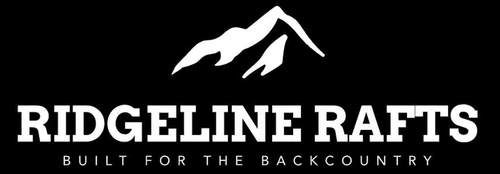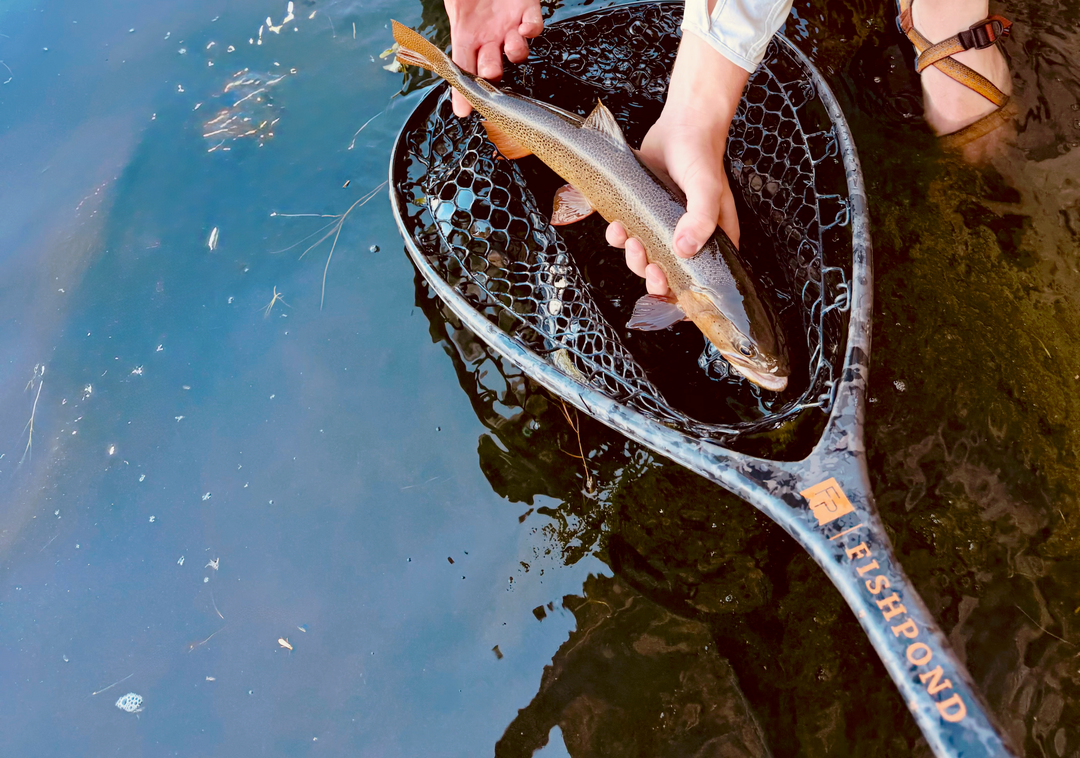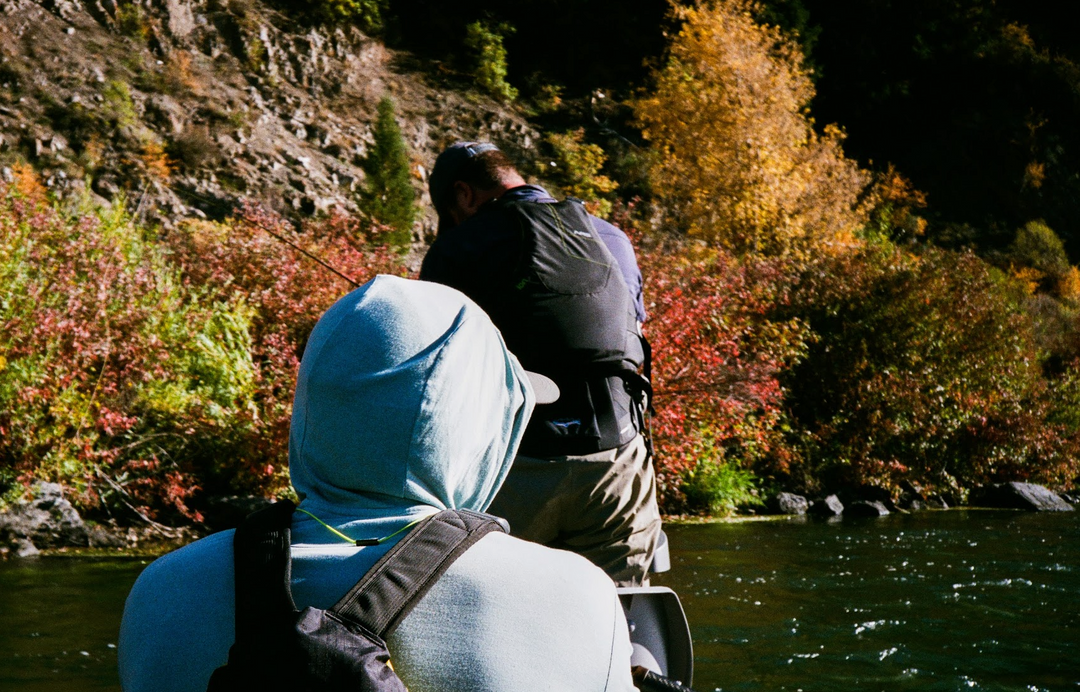Comparing Welded vs. Glued Seams in Fly Fishing Rafts
A Quick Introduction to Fly Fishing Rafts
These fishing boats have revolutionized the way anglers approach the sport (compared to their drift boat cousins), providing a unique and exciting way to experience the thrill of catching fish in new and unexplored waters. These lightweight, portable, and inflatable fishing boats are perfect for two anglers (or three!) and offer a stable and comfortable platform for fishing in low water and often capable for whitewater class rapids. They are ideal for adventure, allowing to explore remote and hard-to-reach fishing spots.
With the ability to navigate rivers and streams with very little water, inflatable fishing boats have opened up new possibilities to access previously inaccessible areas. Whether you’re a seasoned angler or just starting out, fly fishing rafts are an excellent choice for anyone looking to enhance their fishing experience.
Considerations for Choosing an Inflatable Boat
When selecting a personal watercraft for fly fishing, there are several key factors to consider to ensure you choose the best option for your needs. First and foremost, think about the type of water you’ll be fishing in and the number of people who will be using the raft. For instance, a two-person raft is ideal for smaller streams or rivers, providing a stable and comfortable platform for fishing. However, if you plan to fish in larger waters or with multiple anglers, a bigger boat may be necessary to accommodate everyone and the gear they're carrying.
Weight and portability are also crucial considerations. A lightweight and easily transportable raft allows for easy setup and easier to carry to the river, making it convenient for spontaneous fishing trips. Stability and maneuverability in the water are equally important, ensuring that the boat can handle various conditions and provide a safe fishing experience.
Additionally, consider the accessories that come with the boat, such as motor mounts, rod holders, coolers, boat boxes and other fishing gear. Determine whether these items are included in the package or need to be purchased separately. The ability to customize the raft with different features, frame designs, can also be a significant factor in your decision-making process. By carefully evaluating these considerations, you can choose a raft that meets your specific needs and enhances your fly fishing adventures.
Now all of the above is important when someone starts looking for their first boat, but they tend to get mesmerized by add ons and all the things they can put on their raft while they float. While these can make a difference in your time on the water the more foundational construction of a raft is the most important. You're buying an inflatable fishing boat so you should spend a lot of time investigating it's design. One key element that is frequently over looked is how the boat's seams are constructed.
Understanding Seam Types: Welded vs. Glued
Welded Seams: Welded seams are created by using heat and pressure to fuse the raft’s material, typically PVC (polyvinyl chloride) or urethane, at the molecular level, significantly enhancing the durability and performance of the raft's frame. This process essentially melts the material together, creating a single, unified piece. The result is a seamless bond that is as strong, if not stronger, than the material itself.
Glued Seams: Glued seams, on the other hand, involve adhering the raft’s material pieces together using specialized adhesives. The glue forms a bond between the materials, which hardens as it cures. While this method can create a strong connection, it relies on the adhesive’s quality and the proper application to ensure a secure seal.
Durability and Longevity
One of the most significant advantages of welded seams is their superior durability. Because the seams are fused at the molecular level, they do not rely on an external bonding agent that can deteriorate over time. Welded seams are inherently resistant to peeling, delamination, and cracking, which are common issues with glued seams as the adhesive ages or is exposed to various environmental conditions.
Additionally, lightweight boats with welded seams draw very little water, enhancing their ability to float in shallow streams and rivers. This feature increases fishing opportunities by allowing anglers to navigate previously unfishable areas, making them a valuable tool for having adventures in various terrains and helping catch more fish in the process by going where there is less fishing pressure.
To maintain and protect the raft, it is crucial to use appropriate cleaning products and protectants (Aerospace 303 - essentially raft sunscreen). These products help shield the boat from wear and tear, ensuring it remains functional and aesthetically pleasing for longer periods.
Glued seams, in contrast, are susceptible to degradation over time. Factors such as UV exposure, temperature fluctuations, and moisture can weaken the adhesive bond, leading to potential seam failures. Once the adhesive begins to break down, the seams can start to peel apart, compromising the raft’s integrity and potentially causing leaks. In general, an inflatable fishing boat with glued seams is highly more susceptible to seam leaks than a raft with welded seams. Catastrophic seam failure is unlikely to happen while you’re on the river, but it’s always a good idea to un-roll your boat and inflate it to ensure everything is fine before you launch and find that you have numerous seam leaks which could become a safety concern (again this is unlikely, but I have seen trips ruined because they didn’t check their boats at home before they got to the river).
This is extremely important:
If you let your boat sit in the sun for long periods of time without being covered it can completely ruin your boat (think days, weeks, months depending on climate. Leaving your boat in the sun for 2 days won't ruin it). This is the #1 ways we see rafts ruined. Seam failure from extreme sun exposure isn't covered by warranties as its considered user error.
Performance in Extreme Conditions
Fly fishing often takes enthusiasts to remote new water with limited access. The ability of a raft to perform under these more challenging conditions is crucial. Lightweight inflatable fishing boats can navigate shallow water making it possible to explore previously unreachable fishing spots especially navigating each states water privacy laws. Welded seams provide a consistent and reliable seal that can withstand the rigors of rough waters, sharp rocks, abrasive surfaces, and even sections of river that only have inches of water. The uniformity of welded seams ensures that there are no weak points that could fail.
In contrast, glued seams are more vulnerable to failure in over time. The adhesive can become brittle when temperatures drop or soften in extreme heat, reducing its effectiveness. Additionally, glued seams may not hold up as well against abrasions or punctures, as the adhesive layer can be more easily compromised.
One of the key features of high-quality inflatable fishing boats is the use of welded seams, which provide a durable and airtight seal. This construction method ensures that the raft remains stable and secure, even in rough waters. Welded seams also provide a smooth and consistent surface, which can help to reduce the chances of a seam snagging and damaging that glue's hold during transport and improve the overall durability of the raft.
Maintenance and Repair
While all rafts require some level of maintenance, those with welded seams generally require less frequent and less intensive upkeep. The robust nature of welded seams means fewer concerns about seam integrity over time. In the rare event of a seam issue, repairs on welded seams are less straightforward, but the odds of it happens are almost zero.
Most rafts come with a warranty, cheaper rafts with cheaper builds warranty will land in the 2-5 year mark, whereas higher quality rafts will have a 7+ year warranty - emphasizing their durability and long-term support, which ensures peace of mind for buyers looking for reliable equipment. A lot of brands just can't support anything more than 2-5 years with glued seams because the boat is much more likely to start coming apart at the seams.
Glued seams often necessitate more frequent inspections and maintenance to ensure the adhesive remains intact. The repair process for glued seams can be frequent and may not restore the original strength of the seam. The easiest fix in our opinion is using Aquaseal for small repairs , but once you get your first leak this frequently means they will become more and more common.
Cost Considerations
Welded seams typically require more advanced machinery and skilled labor to produce, which can result in a higher upfront cost for rafts utilizing this technology. However, the long-term benefits, including how durable the boat is and reduced maintenance, often justify the initial investment. The longevity of welded seam rafts can translate into lower overall costs, as they are less likely to require replacement or extensive repairs.
When choosing a raft, it is important to compare features and prices to find the best fit for your fishing needs. Evaluating different models and their accessories can help you make an informed decision.
Glued seam rafts may have a lower initial purchase price, appealing to budget-conscious buyers looking for an affordable option. However, the potential for increased maintenance costs, repairs, and a shorter lifespan can make them a less economical choice in the long run. Investing in a welded seam raft can provide greater value and peace of mind, especially for those who frequently venture into challenging environments.
Welded Seams: The Superior Choice
When comparing welded versus glued seams in inflatable fishing boats, the evidence strongly supports the superiority of welded seams. Their unmatched durability, resilience in extreme conditions, ease of maintenance, and long-term cost-effectiveness make them the preferred choice for serious anglers.
Investing in a welded seam raft is an investment in a reliable, long-lasting product that can handle the demands of diverse fly fishing adventures. These rafts are designed for extensive use (and frequently their warranty is longer because they’re more reliable as well), emphasizing their long-term reliability and strong customer support. Whether you’re navigating calm waters or challenging river rapids, a welded seam raft provides the peace of mind and performance you need to enjoy your time on the water fully.
Now go check your local fishing report, plan that fishing trip, pack the truck, and get out there and hit that river you’ve wanted to hit for a while. You may even catch (and hopefully land) your best trout yet!
Check out our other articles:
In the market for a New Fishing Boat?
Send us an email at Sales@ridgelinerafts.com and we're happy to assist!





